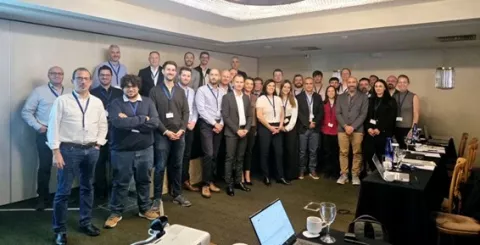
CROSSMARE overcomes existing challenges and addresses capability gaps in border and maritime surveillance by introducing a layered maritime surveillance (LMaS) network and an interoperability framework that integrates space, air, sea surface, underwater, and land-based systems within a comprehensive monitoring picture, enhancing MSA and surveillance capabilities.
To achieve this, CROSSMARE will develop a collaborative AI-based data fusion and sensor management framework to upscale the efficiency in terms of processing and fusion of heterogeneous information sources, and their seamless integration into -extended- C2 systems, improving the MSA capacities of EU maritime authorities. A consortium of 17 big industries, SMEs, RTOs, and end-users a) utilize cutting-edge technologies in the context of maritime surveillance, b) apply innovative AI algorithms, c) extend the capabilities of existing C2 and HMIs, d) and support the interoperability of novel and legacy surveillance systems, improving cross-border and cross agency collaboration.
Eviden leads WP5-WP6. Main effort is concentrated in the implementation of collaborative decision support, early warnings, AI, improved detection and anomaly detection services: Design and creation of a multi-modal data fusion service layer based on the use of VLM agents and a complementary decision support framework.
These elements will work by combining data acquired from heterogeneous sources/sensors and detection outcomes and will provide, as an output, recommendations and support mission management. The multi-modal fusion services will be designed to improve the detection capabilities and performance, reduce false detections and assess emerging threat incidents.
The service will identify anomalies and unusual patterns from different type of data structures (e.g., suspicious vessel activities, underwater threats, unusual patterns etc.) Additionally, we include explainability to help the user understand the chain of reasoning and also to show ‘heat maps’ of the detection.
